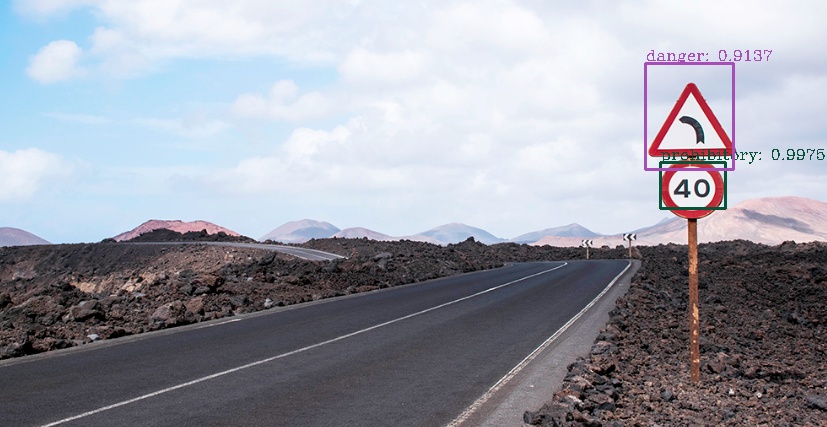In this project, German Traffic Sign Detection Benchmark Dataset was used. Dataset includes the 900 training images (1360 x 800 pixels) in PPM format, the image sections containing only the traffic signs, a file in CSV format with the ground truth, and a ReadMe.txt with more details.
Note: Do not need to the download dataset, we will download it in training_YOLOv3_Darknet.ipynbb 🥳
Open training_YOLOv3_Darknet.ipynb in Colab and run the code.
- In the YOLO format, every image in the dataset has a single text file. If an image has no objects there is no text file for that image.
- Inside the text file, each row contains the following information: The first element of each row is a class id, then bounding box properties (x, y, width, height). Bounding box properties must be normalized (0–1). (x, y) should be the mid-points of a box.
images
→ 0001.jpg
labels
→ 0001.txt
├── class_id, x_centre, y_centre, width, height- Also we need to create the following files before training:
├── train.txt
├── test.txt
├── ts_data.data
├── classes.namesThese files' formats are as following:
train.txt and test.txt
/content/FullIJCNN2013/00539.jpg
/content/FullIJCNN2013/00207.jpg
/content/FullIJCNN2013/00075.jpg
.
.classes.names
prohibitory
danger
mandatory
otherts_data.data
classes = 4
train = /content/FullIJCNN2013/train.txt
valid = /content/FullIJCNN2013/test.txt
names = /content/FullIJCNN2013/classes.names
backup = backupyolov3.cfg includes parameters for training, structure of CNN layers, last three YOLO layers.
filters = (classes + coordinates + 1) * masks
max_batches = classes * 2000 (not less than 4000)
steps = 80% and 90% of max batches (max batches represent total number of iterations for training)
For traffic sign dataset:
filters = (4 + 5) * 3 = 27
max_batches = 4 * 2000 = 8000
steps = 6400, 7200
classes = 4
batch = 32 (training), 1 (testing)
subdivisions = 16 (training), 1 (testing) - (represent number of minibatches in one batch)- Prepare
yolov3_train.cfgandyolov3_test.cfgfiles according to your custom dataset following above instructions and put under thedarknet/cfg/location.
After preparation of all files we will train the the custom dataset with following command:
!./darknet detector train cfg/ts_data.data cfg/yolov3_train.cfg darknet53.conv.74 -dont_showWeights will be saved every 100 iterations in the following path. Now, we will define the best one to use for detection making sure that there is no overfitting.
├── darknet/
├── backup/
├── yolov3_train_1000.weights
├── ...
├── yolov3_train_last.weights
├── yolov3_train_final.weightsThere is special command in Darknet framework that calculates mAP.
!./darknet detector map cfg/ts_data.data cfg/yolov3_ts_train.cfg backup/yolov3_train_1000.weightsContinue checking for all weights in order to define the weights with biggest mAP.
- Put
traffic-sign-test.mp4under thedarknet/data/, andyolov3_train_1000.weightstodarknet/weights/location.
!./darknet detector demo cfg/ts_data.data cfg/yolov3_ts_test.cfg weights/yolov3_train_1000.weights data/traffic-sign-test.mp4 -out_filename traffic-sign-to-test.avi -dont_showOpen the traffic_sign_image_detection.ipynb notebook and run the script for your test image.
Open the traffic_sign_detection_on_video.ipynb notebook and run the script for your test video.

